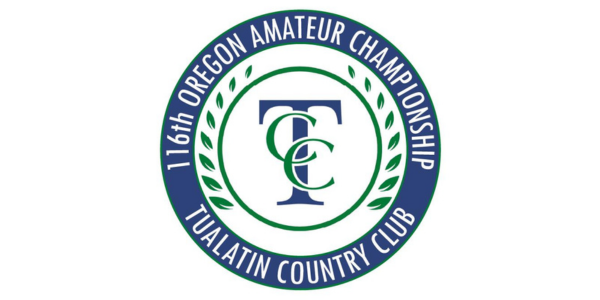With Valentine's Day coming soon, it is fitting to highlight competitions that involve partners. Four-Ball and Foursomes forms of play add an enjoyable aspect to the game. However, teaming up with a partner can also create some Rule scenarios that golfers don’t have to contemplate when playing individual stroke or match play. And a new Rule added this year is a must-to know before beginning the competition.
In addition to Valentine's Day, February 2nd is Groundhog Day. So don’t be surprised if a rodent shows up in our questions to test your knowledge regarding Four-Ball and Foursome competitions. Additionally, February 1st is National Girls and Women in Sports Day. Thank you for playing golf!
Test your knowledge regarding partner events with the following questions. And should you be reading this article on National Optimist Day, which is also on February 2nd, we know you will get the correct answers.
Questions: True / False
1. In a Foursomes competition, partners play as one side by alternating making a stroke at a single ball. In a Four-Ball competition, partners play together as one side, with each player playing their own ball and the score for a hole is the lower score of the two partners.
2. Partners in a Foursomes or Four-Ball competition may share clubs provided the total number of clubs they have together is not more than 14.
3. In a Four-Ball competition, a player’s ball comes to rest near a groundhog hole and free relief is available since there is interference to the player’s stance. As it is February 17th, Random Acts of Kindness Day, the player’s partner lifts the player’s ball and properly drops it for the player in the relief area. There is a penalty if the player makes a stroke at the ball without correcting the drop by dropping a ball themselves.
4. A player must not stand on or close to an extension of the line of play behind the ball while their partner is making a stroke to gain information for their next stroke.
5. In a Four-Ball match, if it is the side’s turn to play, the partners may play in the order the side considers to be most advantageous provided that play is not delayed.
6. In a Foursomes competition, both partners must play from the teeing area and then select which ball to complete the hole by alternating shots until the ball is holed.
7. If a player in a Foursomes stroke play competition plays when their partner should have played, the side could be disqualified.
8. In match play or stroke play Four-Ball, the player and partner must not agree to leave a ball in place on the putting green to help either of them.
9. When returning the scorecard in a Four-Ball stroke play competition, the score for each hole must be clearly identified as the score of one of the individual partner who made it. And both partners must certify the scorecard if the card includes hole scores from both partners.
10. In a Foursomes competition, if the side decides to play a provisional ball, it must be played by the partner whose turn it is to play the next stroke.
Answers:
1. True. Rules 22.1 and 23.1. It is important to understand the form of play before attempting to answer the following questions as well as applying the Rules when out on the course.
2. True. Rules 22.5 and 23.7. In both forms of play, players may share clubs provided they have 14 or fewer clubs between them. If partners are not sharing clubs, making a stroke with a partner’s club will get you the general penalty under Rule 4.1b(2).
3. False. Rule 23.5a. When two players play as a side, even though each is playing their own ball, a player may take any action concerning their partner’s ball that the partner is allowed to take. Therefore, a player may mark, lift, replace, drop and even place their partner’s ball without penalty. Please note, in the case presented, the partner is responsible for any breach of the Rules that the player may have committed, such as dropping the partner’s ball from a height that is not allowed.
4. True. Rules 22.6 and 23.8. In both forms of play, a new Rule restricts a player from standing on or close to an extension of the line of play behind the ball while their partner is making a stroke to gain information for their next stroke or the side’s next stroke. This area is now referred to as the restricted area in the Rules. Additionally, under Rule 10.2b(4), the player is not allowed to stand in this area to assist their partner with aiming unless the player moves away before their partner takes a stance for the stroke to be made. February 23rd is National Rationalization Day so we back up this new Rule by quoting the purpose of advice Rules; “A fundamental challenge for the player is deciding the strategy and tactics for their play. So there are limits to the advice and other help the player may get during the round”.
5. True. Rule 23.6. In both match play and stroke play Four-ball competitions, when it is one of the player’s turn to play under Rule 6.4, they may have their partner play first. If the balls are near each other, be careful not to stand in the restricted area.
6. False. Rule 22.3. Partners must alternate the order in which they play from the teeing areas. In other words, one of the partners will begin the hole for the side from all the odd numbered holes while the other partner will begin the hole from all the even numbered holes.
7. True. Rule 22.3. But February 11th is Don’t Cry Over Spilled Milk Day. The mistake can be corrected. However, the side gets the general penalty of two strokes. And to avoid being disqualified, the right partner must make a stroke from where the side made the first stroke in the wrong order before making a stroke to begin another hole or if the mistake happens on the last hole, before returning the side’s scorecard. The stroke made in the incorrect order and any additional strokes made on the hole before correcting the error do not count in the side’s score.
8. False. Rules 15.3a and 23.5a. The prohibition to making this agreement applies only in stroke play formats. If an agreement is made in stroke play and one of them makes a stroke with the helping ball left in place, they both incur two penalty strokes. If they knew that such an agreement was not allowed but still agreed to breach the Rule, they are both disqualified under Rule 1.3b. Now you can cry over spilled milk.
9. False. Rules 23.2b and 3.3b(2). Most of this question is true, except that only one of the partners needs to certify the scorecard for the side. It is important to ensure that every hole score is clearly identified as the score of the partner who made it. Failure to do so results in a penalty of disqualification. And in that case, if you are the partner that is checking and certifying the card before returning it to the Committee, your Valentine’s Day might not be as warm and cuddly as planned.
10. True. Rule 22.3. Penalty strokes added to the side’s score do not affect the order of play. Therefore, if partner A’s shot might be out of bounds, partner B will be playing the provisional ball under the possible penalty of stroke and distance. And whatever you do, don’t forget to announce that partner B’s ball is a provisional. Either partner may make the announcement. Failure to do so will result in partner B’s ball being in play under stroke and distance even if partner A’s ball is found in bounds.
Last, but certainly not least, February 20th is President’s Day and we honor all those who have served as Commander in Chief of the United States of America. Thank you to the 45 individuals that have held the office of the President.



